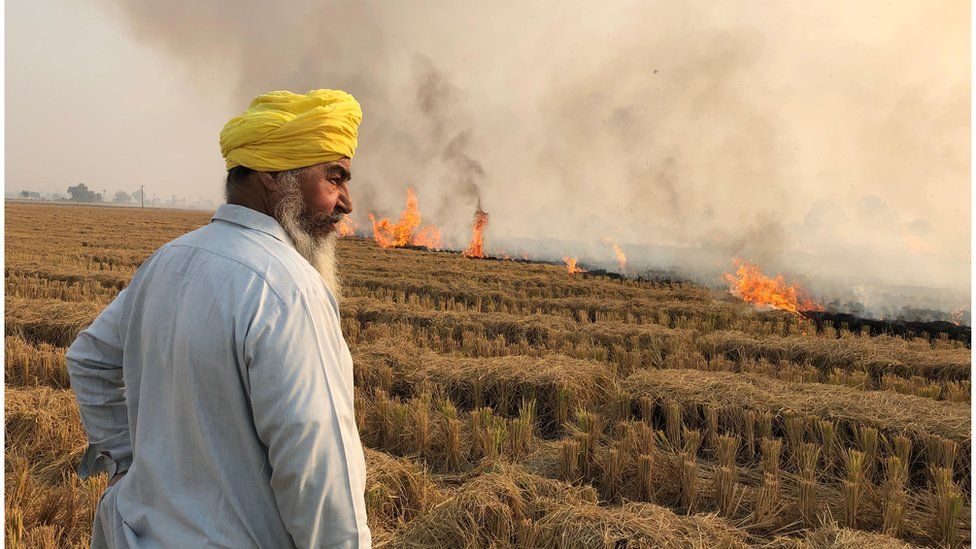
Central idea
The Supreme Court addresses urgent concerns over Delhi’s severe air pollution, emphasizing the need to immediately halt stubble burning in neighboring states like Punjab. Stubble burning, contributing nearly 38% to pollution, poses health risks, and the court advocates for swift measures, including economic incentives, to shift farmers away from paddy cultivation.
Key Highlights:
- Supreme Court urges adjoining states to curb stubble burning as Delhi’s air quality index breaches 400.
- Biomass burning, particularly stubble burning, contributes significantly to Delhi’s pollution, posing health risks and potential loss of 11.9 years of life for residents.
- Urgent action required to control stubble burning in Punjab, which accounts for a major portion of pollution.
Challenges:
- Stubble burning persists despite attempts to stop, revealing a breakdown in law and order.
- Inefficient alternatives and lack of farmer incentives contribute to the continuation of stubble burning.
- Over-reliance on rice and wheat in the Public Distribution System leads to environmental harm and health issues.
Key Phrases:
- Decision Support System for air quality management.
- Air Quality Life Index report by the University of Chicago’s Energy Policy Institute.
- Greenhouse gas emissions from paddy cultivation in Punjab.
- Subsidy on paddy cultivation and its impact on farmers’ choices.
Analysis:
- Biomass burning, especially stubble burning, is a major contributor to Delhi’s pollution, overshadowing the impact of transport and construction.
- The Supreme Court emphasizes the need to cut paddy cultivation in Punjab-Haryana and suggests alternatives to curb stubble burning.
- Economic incentives and policy changes are crucial to wean farmers away from paddy cultivation and address environmental concerns.
Key Data:
- Biomass burning, mainly stubble burning, accounts for 37.85% of Delhi’s pollution.
- Punjab farmers receive a subsidy of almost Rs 30,000/ha for paddy cultivation.
- Loss of 11.9 years of life for Delhi residents due to pollution.
Key Facts:
- The water table in Sangrur, Punjab, has gone down by 25 meters in the last 20 years.
- Stubble burning remains a significant challenge despite efforts by officials.
Key words for mains answer value addition:
- Stubble burning.
- Public Distribution System.
- Decision Support System.
- Air Quality Life Index.
- Greenhouse gas emissions.
Way Forward:
- Implement strong measures to control stubble burning, making the local Station House Office (SHO) responsible.
- Incentivize farmers to switch from paddy to pulses, oilseeds, and millets to create a crop-neutral incentive structure.
- Encourage private sector investment in ethanol plants based on maize to reduce reliance on paddy and lower air pollution from vehicular traffic.
- Limit paddy procurement by state agencies in areas with fast-depleting water tables and where farmers continue stubble burning.
- Promote a diversified market by offering nutritious crops through fair price shops, reducing reliance on rice and wheat and minimizing environmental impact.
Get an IAS/IPS ranker as your 1: 1 personal mentor for UPSC 2024
